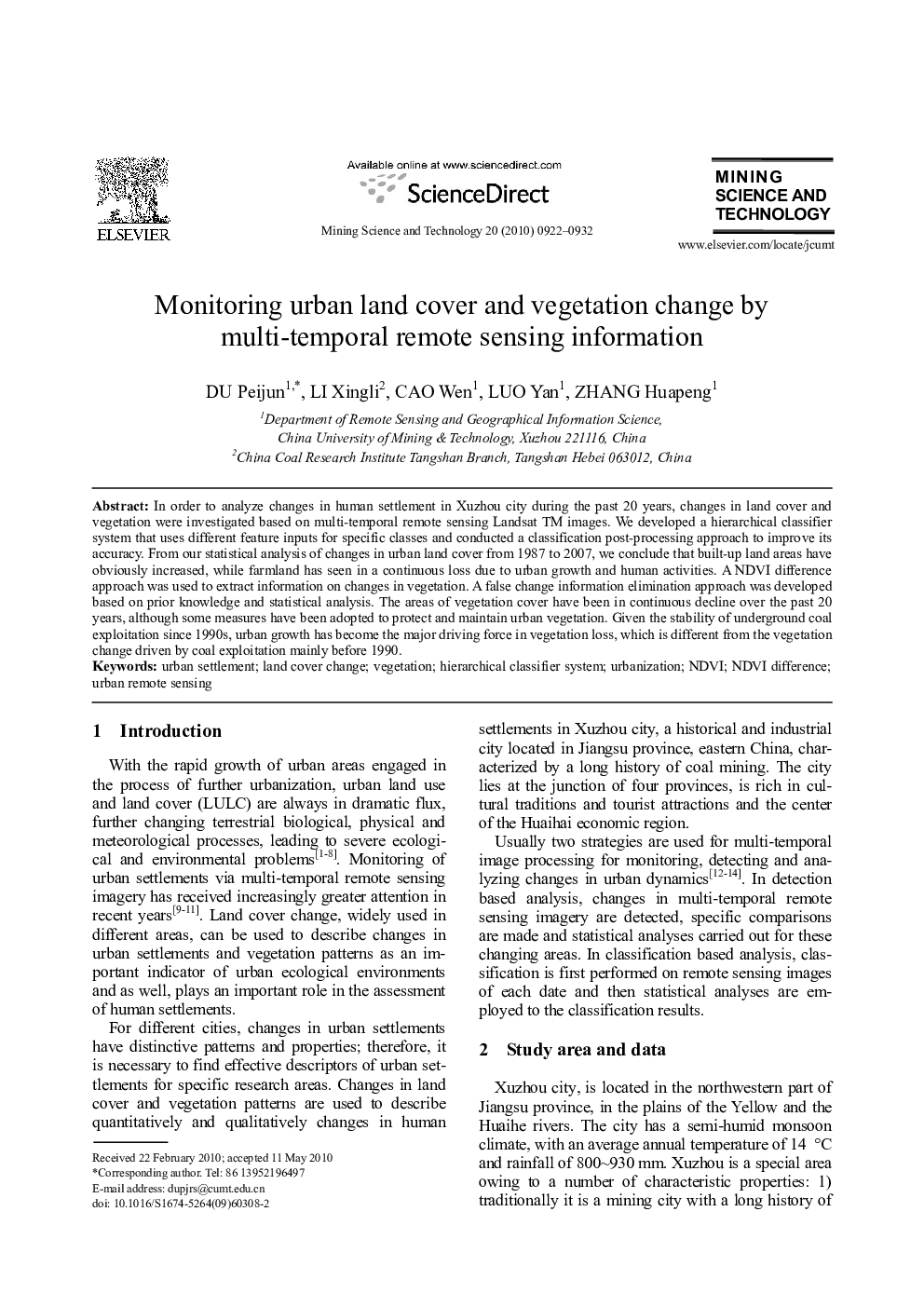| Article ID | Journal | Published Year | Pages | File Type |
|---|---|---|---|---|
| 294604 | Mining Science and Technology (China) | 2010 | 11 Pages |
In order to analyze changes in human settlement in Xuzhou city during the past 20 years, changes in land cover and vegetation were investigated based on multi-temporal remote sensing Landsat TM images. We developed a hierarchical classifier system that uses different feature inputs for specific classes and conducted a classification post-processing approach to improve its accuracy. From our statistical analysis of changes in urban land cover from 1987 to 2007, we conclude that built-up land areas have obviously increased, while farmland has seen in a continuous loss due to urban growth and human activities. A NDVI difference approach was used to extract information on changes in vegetation. A false change information elimination approach was developed based on prior knowledge and statistical analysis. The areas of vegetation cover have been in continuous decline over the past 20 years, although some measures have been adopted to protect and maintain urban vegetation. Given the stability of underground coal exploitation since 1990s, urban growth has become the major driving force in vegetation loss, which is different from the vegetation change driven by coal exploitation mainly before 1990.
